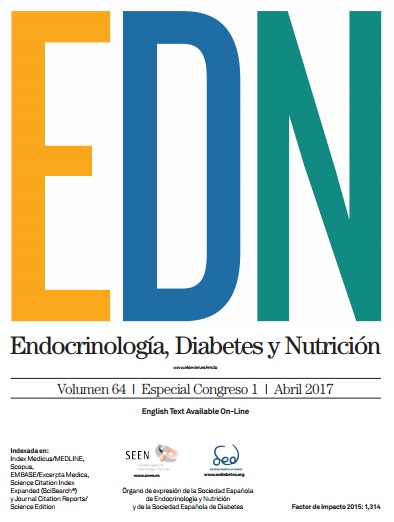P-046 - Assessment of a SV40 Viral Vector System to Induce Insulin-Mediated Immune Tolerance in a Mouse Model of Type 1 Diabetes Mellitus
aCABIMER, Sevilla. bAmarna Therapeutics BV, Leiden, Países Bajos. cAmarna Therapeutics S.L., Sevilla.
Introduction and objectives: Clinical trials aimed at inducing insulin specific tolerance were shown to increase C-peptide levels in Type 1 diabetic patients. However, glycaemia was not improved most likely due to suboptimal administration and transient expression of the DNA plasmid encoding insulin. To circumvent these caveats, we assessed the feasibility of using our SV40-derived viral vector platform (SVac) to induce insulin immune tolerance in the RIP-B7.1 mouse model of experimental autoimmune diabetes (EAD). The efficacy of both the human preproinsulin (PPINS) and proinsulin (PINS) to induce immune tolerance was investigated.
Material and methods: The PPINS and PINS as well as the luciferase (Luc) cDNAs were subcloned into the SVac viral plasmid backbone (pSVPPINS, pSVPINS and pSVLuc). Quantitative-PCR, Western blotting and immunocytochemistry were used to confirm trans-gene expression in HEK cells. Viral particles expressing luciferase (SVLuc) were generated by transfection of the proprietary engineered producer SuperVero cell line with pSVLuc. Biodistribution, toxicity as well as liver-specific expression of SVLuc-derived luciferase was assessed in mice. For immune tolerance studies, RIP-B7.1 mice were vaccinated twice over 2 weeks (intramuscularly) with pSVPPINS, pSVPINS or pSVLuc prior to EAD induction via immunization with an expression plasmid encoding the human preproinsulin (phPPINS). Blood glucose levels were then measured weekly for up to 11 weeks.
Results: We initially determined the biodistribution and biosafety of SVLuc in mice and marmosets. Luciferase activity, monitored using in vivo bioluminescence imaging, was predominantly detected in liver for up to 3 days in mice. Accordingly, SVac viral plasmid was found in liver samples of transduced animals as compared to control animals one week post-administration. Immunohistochemistry reveals luciferase expression in liver of marmosets two weeks post-administration. Serum alanine transferase levels, a marker of stress/injury, were not increased in SVLuc-injected animals. Expression of the pSVPPINS and pSVPINS constructs was confirmed in transfected HEK cells, albeit at lower levels as compared to the phPPINS employed to induce EAD. As a result of low expression levels, pSVPPINS and pSVPINS did not prompt EAD in RIP-B7 mice as compared to phPPINS. In contrast, the incidence of hyperglycemia induced by phPPINS was drastically reduced in mice that were vaccinated with pSVPINS (40%) as compared to mice either vaccinated with pSVLuc (100%) or pSVPPINS (75%).
Conclusions: SVac viral vectors preferentially target the liver without signs of major adverse effect in rodents and non-human primates. Low expression levels of PINS mediated by pSVac delivery is more efficient in inducing immune tolerance as compared to PPINS. We anticipate that SVPINS may be a promising strategy to induce tolerance and prevent development of hyperglycemia without adverse immunogenicity issue caused by other vector vehicles.
Funding: This work was funded by Amarna Therapeutics and by grants from ISCIII co-funded by Fondos FEDER (PI13/00593 to BRG).






